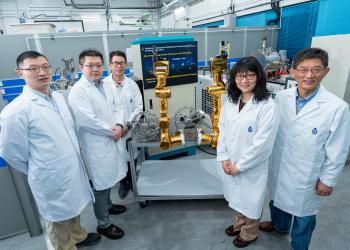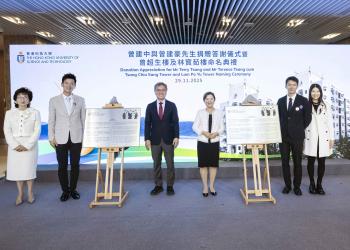HKUST Develops Powerful Hair-based Drug Testing Technology
An HKUST professor today announced the successful development of a hair-based drug testing technology as an alternative to other drug testing methods, including the urine-based drug test commonly used in Hong Kong. It is also 1,000 times more sensitive than the hair-based drug testing method often used in China and the USA.
Called the High Performance Liquid Chromatography-Chip-Mass Spectrometry (HPLC-Chip-MS/MS), the hair-based drug testing technology developed by HKUST can trace a person’s drug-taking history over the past 3 months or more – in terms of what drugs have been taken, when, and the actual dosage.
Prof Karl Tsim, Head of the Department of Biology at HKUST, has spent over a year developing this new technology. “This hair-based test provides the answer to a range of technical challenges associated with the urine-based drug testing technology commonly employed in Hong Kong,” he said.
For the urine test, the sample needs to be taken at a designated place by designated personnel in order to prevent cheating, and the process may create a degree of embarrassment.
Secondly, if the urine sample is not tested immediately, it needs to be kept at a low temperature.
Thirdly, the urine-based test can detect drugs taken only within the past several days, and the drug-taking history preceding this period cannot be traced.
Finally, hair-based testing offers high reliability. For instance, some test papers used in urine tests are sensitive to certain western and Chinese herbal medicines, resulting in “false positive” outcomes. On the other hand, there are ways that people use to create a “false negative” outcome – such as taking large quantities of water or electrolytic drinks to dilute the urine, or taking certain vitamins to conceal the concentration of drug traces.
The HPLC-Chip-MS/MS technology can address these challenges. First, collection of samples is relatively easy. Normally, 5 to 10 pieces of hair are cut from the back of the head, and the process is less embarrassing than obtaining urine.
Second, the hair samples can be kept in room temperature and will remain stable for a very long period.
Third, the hair-based test can trace the person’s drug-taking history from 7 days before the test to at least 3 months. It is also possible to trace the dosage of the drugs taken to determine the degree of addiction, and the pattern of drug-taking over that period.
Finally, this hair-based testing will not generate “false positive” or “false negative” results. It can also be used to test new types of drugs that cannot be revealed by many of the urine tests currently used.
Prof Tsim said, “While our technology addresses many of the challenges of the urine-based drug test, admittedly it also has certain limitations. First, it can only detect drugs taken 7 or more days ago. Also, the time taken to yield results – one to two days – is longer than the urine-based drug test where the results are shown almost immediately. And currently the cost for our test is somewhat higher than that for a urine-based test.”
“Hence our technology is not intended to replace the urine-based test, but can serve as a powerful supplement to it,” he added.
Comparison with Other Hair-based Drug Tests
Currently, other hair-based drug testing technologies are being used in other countries such as China and the USA. Most of these technologies are called Gas Chromatography -Mass Spectrometry (GC-MS), and have certain drawbacks.
For instance, for GC-MS the hair samples need to be treated by following a rather complicated set of procedures. Moreover, the samples need to be of larger quantity – about 50 pieces of hair.
On the other hand, for the HPLC-Chip-MS/MS technology developed by HKUST, the samples do not need to be treated, and the sample quantity required is much lower – only 5 to 10 pieces of hair are needed. This is because HPLC-Chip-MS/MS is 1,000 times more sensitive than GC-MS.
Compared with GC-MS, HKUST’s technology yields faster results, while the cost is slightly lower.
Collaboration with Local and Mainland Institutions
HKUST is currently collaborating with the Shenzhen Institute for Drug Control and the Center of Compulsory Detoxification, Shenzhen under the Shenzhen Public Security Bureau to obtain a diversified supply of hair samples and to cross-check test results.
HKUST is also offering this new technology to the Hong Kong Federation of Youth Groups (HKFYG) to help them monitor the progress of drug rehabilitation among youngsters in Hong Kong.
Mr Leo Man Chap-Mo, Youth Work Officer at HKFYG, said, “This hair-based drug testing technology provides the youngsters and their parents with reliable evidence on the effectiveness of the drug rehabilitation program. It also gives great motivation for the youngsters to rid themselves of their addiction and live a drug-free life.”
For media enquiries, please feel free to contact :
Ross Lai
Tel: 2358 6306 / 9103 2928
Email: rosslai@ust.hk
Donna Wong
Tel: 2358 6317
Email: donnaw@ust.hk










